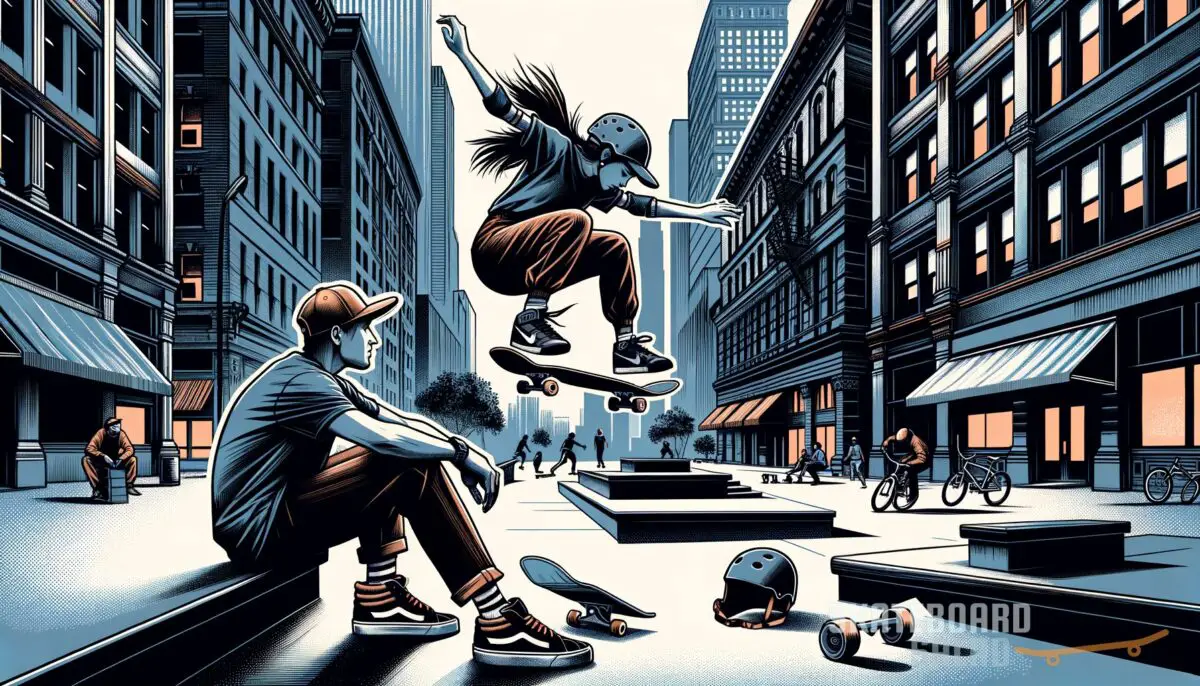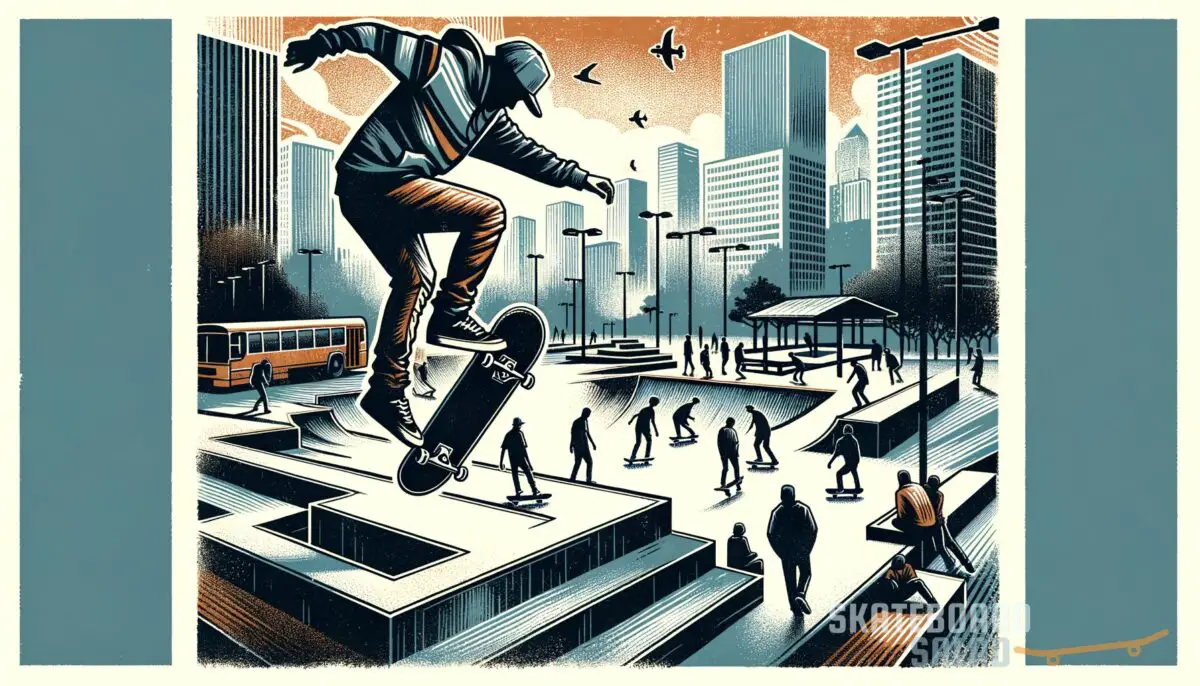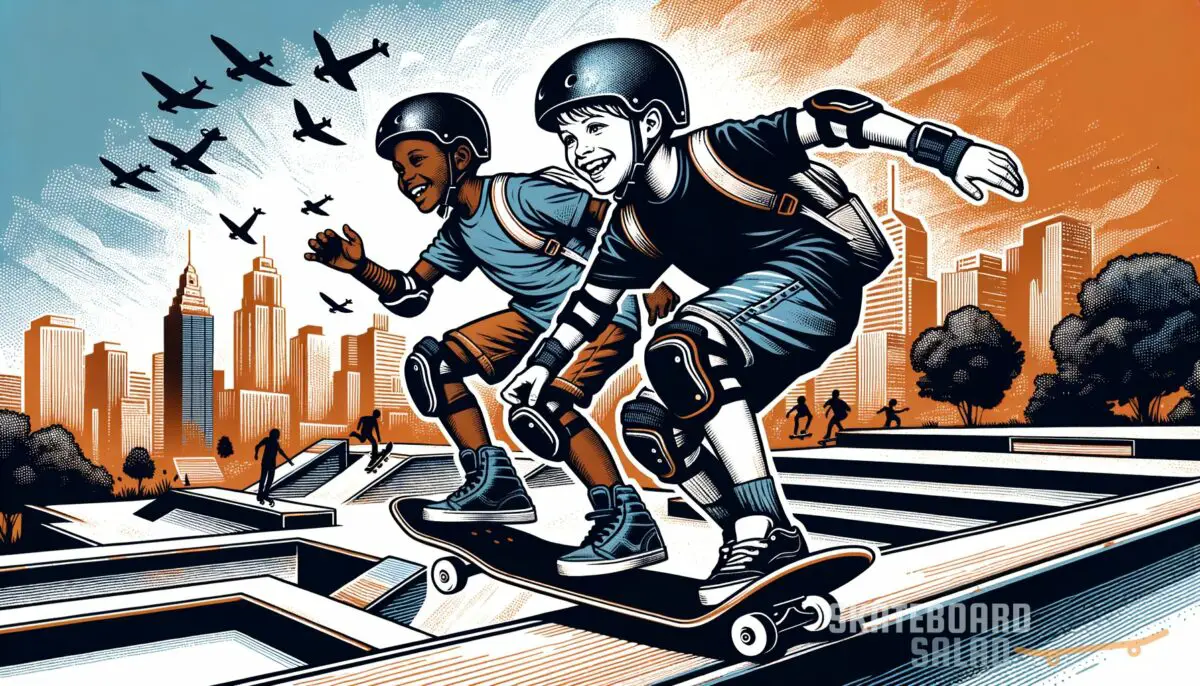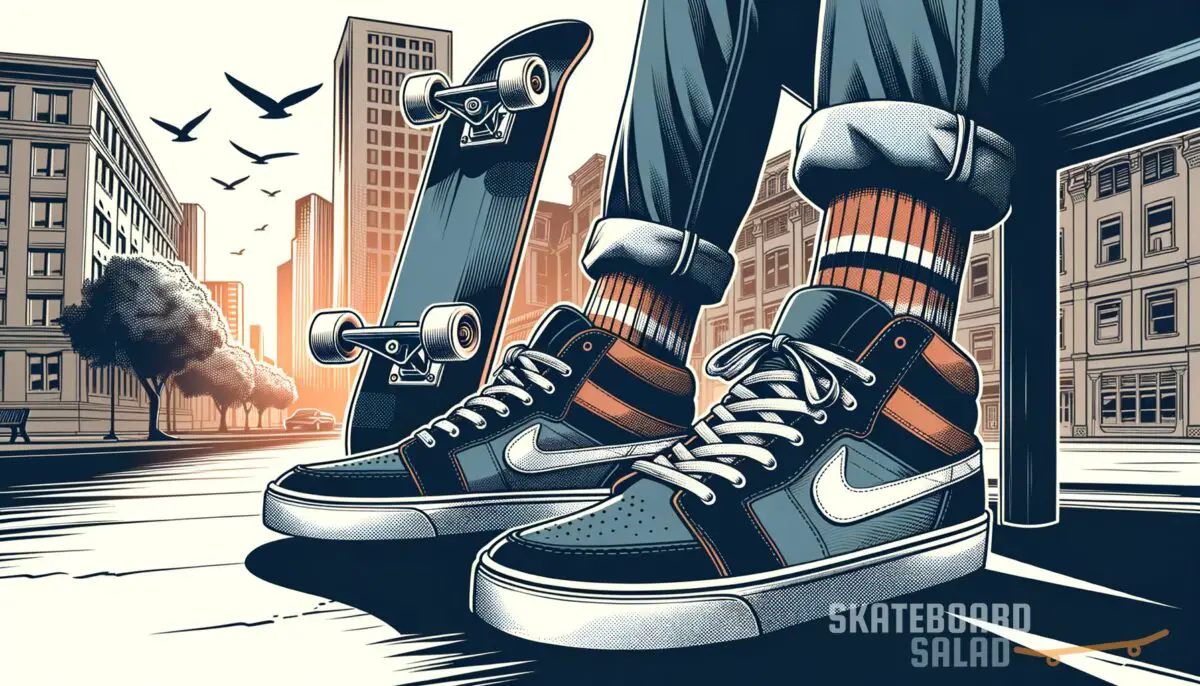What could be cooler than cruising on your skateboard and launching into the air with a solid ollie? That’s right, pretty much nothing. But if you’re like me, just starting out and eager to master this fundamental trick, you might need a little guidance. Stick with me, and we’ll dive into how to ollie, from understanding the nitty-gritty mechanics straight through to nailing the technique.
What is an ollie?
An ollie, named after its inventor, Alan “Ollie” Gelfand, is a skateboarding trick where the rider and board leap off the ground without using the rider’s hands. It’s a cool maneuver and a solid choice for every skater’s repertoire. Essentially, it involves popping the board’s tail down while simultaneously sliding your front foot forward to get the board airborne.
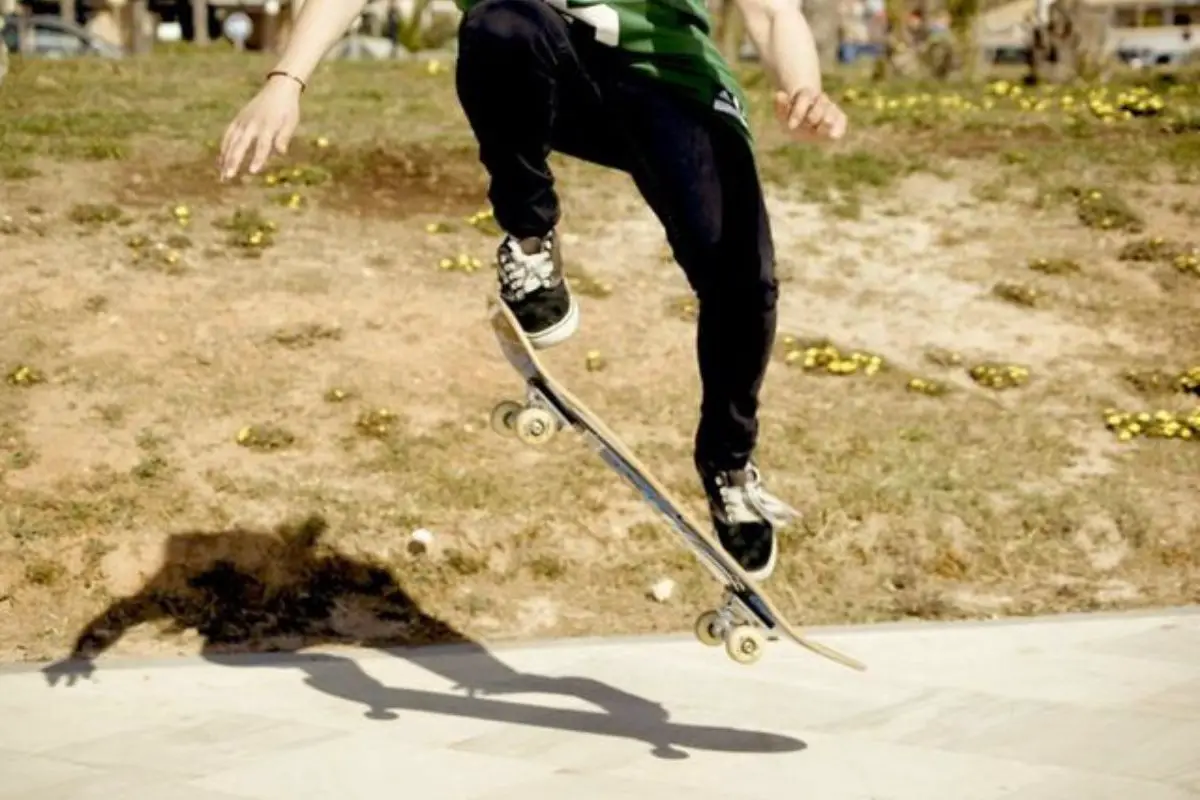
If you are a visual learner, check out the video below from YouTube.
Enjoi Whitey Panda Complete Skateboard

Enjoi Whitey Panda Complete Skateboard
How to ollie
So you’ve got your board and are excited—it’s time to rock ‘n roll. Here’s how you can get started with your first ollie: Strap in; we’re about to take off.
Comfort and control
Before you even start to try an ollie, it’s critical that you feel comfortable on your skateboard. Spend time simply riding around, pushing, carving, and kick-turning. It’s not glamorous, but it’s just like life: you have to walk before you can run, or, in this case, ride before you can fly. Find out more about the basics in this awesome guide on kicking and carving.
Mastering the jump
To start, position your feet shoulder-width apart. Bend deep at the knees, keeping your head above your toes. As you’re ready to jump, use your legs to explode up, pushing your ankles down and propelling yourself off the balls of your feet. Remember to lift your knees toward your chest as you leap. This is the same principle you’ll apply when doing the ollie.
Perfecting foot placement
This step is crucial to getting a successful ollie. Your front foot should be just behind the second bolt on your board. As a novice, using a skate tool to trace your feet on the board can be hugely helpful; it helps fast-track your set-up periods. Check out this informative resource if you’re unsure what a skate tool is.
The power of pop
When you’re ready to try the ollie, your focus should be on achieving a powerful pop to get your back wheels off the ground. You’ll achieve this by pushing down hard with your back foot, giving your board the momentum to rise. It’s like that Insane in the Membrane song—the more you pop, the more insane your ollie gets.
Leveraging the front foot slide
After you pop, your front foot needs to slide up the board, creating the force to lift your back wheels and level your board. You’re trying to contact the concave sweet spot on your board, lifting your back wheels. This action controls how high your ollie will go. So slide that foot, friend; it’s your ticket skyward.
Practice makes perfect
Once you’ve mastered the basics, it’s all about practice. First, try the move while stationary. Next, bring in a slow, controlled movement. Remember that the faster you go, the harder you’ll need to pop and lean forward.
Ollies are a killer trick you’ll be stoked to have in your arsenal. Like a Jedi from Star Wars, learning to master the technique will require patience, perseverance, and practice, but it’s worth it.
Keep at it, stay safe, and remember to shred the gnar. Subscribe to my videos for more awesome tips and trick guides. Skate on!
Dos and don’ts of ollie
When mastering the ollie, knowing what to do and what to avoid can make all the difference. Let’s look at some of the key dos and don’ts, like the roadmap to your ollie success.
| Do | Don’t |
|---|---|
| Don’t | Make sure you’re comfortable on your board before attempting an ollie |
| Focus on popping hard with your back foot to get the board airborne | Don’t rush into trying an ollie without mastering the basics of skateboarding |
| Always slide your front foot up the board to level it in the air | Don’t ignore the importance of a powerful pop |
| Start practicing while stationary, then slowly incorporate movement | Don’t forget to slide your front foot |
| Be patient, practice consistently, and don’t give up | Be patient, practice consistently and don’t give up |
Additional ollie tips
Beyond the core steps to nail an ollie, a few more practical nuggets of wisdom can bolster your progress. Incorporate these into your practice, and you’ll be that rad skater nailing ollies like a boss in no time.
- Find a comfortable, open space for practicing, free of distractions.
- Remember, safety first—always wear suitable gear. Read about my top picks for gear in this informative article.
- Never underestimate the power of watching other skaters. You can learn a lot from observation.
- Consistency is key. Make time for regular practice sessions.
- Stay hydrated. It’s a fairly physical process, and you must keep your energy up.
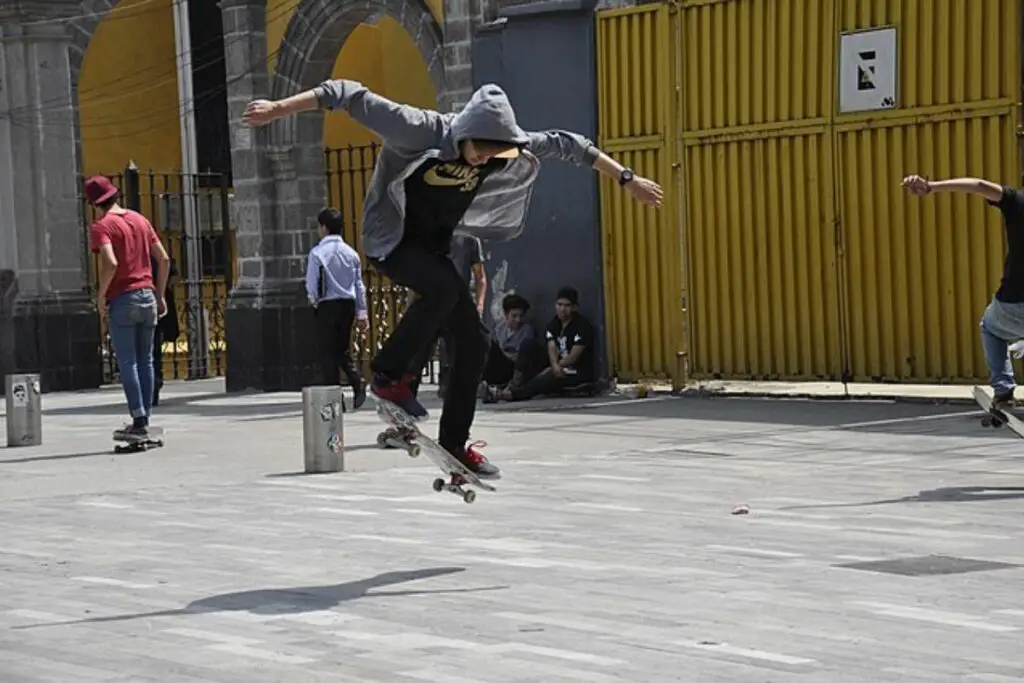
Steven’s personal ollie journey
From my own experience, learning to ollie was no walk in the park. I was definitely not a natural, and it was pretty clear from the get-go. The first few times, it felt like I was trying to break dance on a piece of wood. It was honestly laughable!
But I stuck with it, fumbling and bumbling through countless attempts. I reminded myself that every great skater I admire started at the beginning as well. Remember, it’s not about being an immediate pro but about embracing the journey of progress, however sketchy it might look.
Dancing with the pavement might not be romantic, but it’s all part of the journey to steal the show with a killer ollie. Stick with it, and remember the only way to go from here is up.
When learning the ollie, understanding the different components of your skateboard and how they influence the trick is crucial. Here’s a handy breakdown of the main skateboard components and their role in executing an ollie.
| Skateboard Components | Role in Ollie |
|---|---|
| Deck | Provides the platform for your feet to pop and slide |
| Trucks | Directly involved in the pop of the ollie, giving the necessary resistance |
| Grip Tape | Allows for a non-slip surface for your feet to slide and lift the board |
| Wheels | While not directly involved in the ollie, the hardness can impact landing stability |
Advantages and disadvantages of doing an ollie
Performing an ollie is a rite of passage in the skateboarding world. It’s the foundation for many other tricks and can unlock a whole new level of fun and enjoyment. But, like anything worth doing, it does come with its own set of pros and cons.
Advantages
Executing an ollie provides several benefits, including:
- Boosts your overall skateboarding skills: As a fundamental maneuver, it helps develop your balance, control, and agility on the skateboard.
- Allows for more fun: With the ollie in your repertoire, you can start tackling obstacles, adding an engaging element to your rides.
- Opens up opportunities for advanced tricks: Many other tricks, like the kickflip or grind, have the ollie as a foundational move.
Disadvantages
Despite its benefits, mastering the ollie can present some challenges:
- Risk of injury: Like any skateboarding trick, there’s always the risk of falls and potential injuries, particularly when practicing.
- Requires time and patience: Perfecting the ollie technique requires a good deal of time, repetition, and patience.
- It can be frustrating: As a beginner, it’s easy to get frustrated when progress seems slow or nonexistent.
Achieving your first ollie may feel like an uphill battle, but remember the old saying: It’s about the journey, not the destination. Happy skating!
Frequently Asked Questions (FAQ)
Alright, ready for the home stretch on our ollie journey? Let’s zoom into some of the nitty-gritty details and address some commonly asked questions. These are things many new skaters wonder about but may not find straightforward answers to. I’m here to break it down for you.
How long does it usually take to learn an ollie?
There’s no clear-cut timetable for learning an ollie. Some skaters might nail it in their first week, while others may need a few months of consistent practice. The key is regular practice and understanding that it’s a personal journey. Every skater is unique, so stick with it and focus on your progress.
Is it easier to ollie with a specific type of skateboard?
Generally, a standard street or park skateboard would be the optimal choice for learning an ollie. The shape and flexibility of these boards make it easier to pop and level in the air. However, every skater is different, and the best option is always what feels most comfortable to you. Feel free to experiment, and check out this useful guide on skateboard parts.
Do I need special shoes for ollie?
Not necessarily, but skate-specific shoes can definitely make the process easier. They’re designed with flat soles that give a better board feel, and extra padding can protect your feet during practice. Oh, and a sneaky bonus: they’ll help protect your everyday wear from the quick wear and tear that skateboarding can cause. Here’s a rundown of some top-rated skate shoes
Remember, there’s no shortcut to learning an ollie. It takes time, practice, and the right technique. Now, it’s time to hit the park and start practicing!
Final thoughts
Whether you’re just starting your skateboarding journey or looking to up your game, nailing the ollie is a pivotal step. It’s not just a trick, but a pillar upon which your skating skills will grow and flourish. It can be tricky—frustrating even—but trust me, the day you stick your first ollie, it’ll all be worth it. Ready to roll? Check out these additional tips for skateboarding beginners to complement your ollie practice.
I’ve gotta ask, what’s the one aspect of the ollie you find most challenging? And did I cover everything you wanted to know? Let me know in the comments section below. I read and reply to every comment. If you found this article helpful, share it with a friend, and don’t forget to check out my full blog for plenty more skateboarding tips and tricks. Thanks for reading, and as always, keep rolling!
Key takeaways
This article covered how to master the classic ollie, so let’s hit rewind and recap:
- An ollie involves launching your skateboard off the ground without using your hands, and it forms the foundation for many advanced tricks.
- Before attempting the ollie, getting comfortable riding your skateboard is vital: push, carve, kick, turn, stop, repeat.
- Perfecting the ollie involves a series of steps: getting comfortable on your board, mastering the jump, fine-tuning your foot placement, achieving a powerful pop, learning to slide your front foot, and then practicing, practicing, practicing!
- Meticulous foot placement and pop are essential components of a successful ollie.
- Practicing ollies while stationary and then slowly incorporating movement is a proven method toward mastery.
- Like any skate trick, learning the ollie has pros (skill development, trick foundation, more fun) and cons (potential injury, time and patience, frustration).



